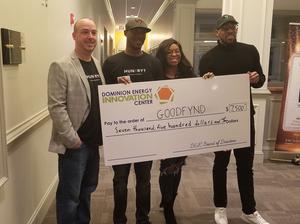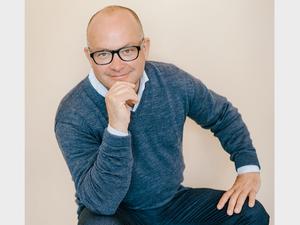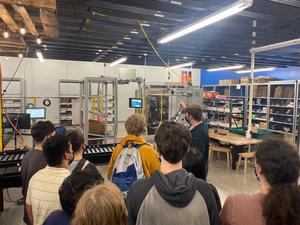
Employees are quitting their jobs at an alarming rate.
The Society for Human Resource Management analyzed recent data from the U.S. Bureau of Labor Statistics and found that employee attrition hit an all-time high in 2018. Every month last year, 3.5 million American workers voluntarily boxed up their desks and walked out.
While it depends on the industry, a healthy average turnover rate is 10 percent annually, according to HR analysts. But Work Institute, a 19-year-old talent research firm, estimated that 42 million, or 25 percent, of employees left their jobs in 2018.
These data points unearth a growing trend many companies are worried about: an employee retention crisis. How do companies retain their top talent?
There are many variables that employers can fine-tune to make a job attractive, but 83 percent of companies agree the top goal of their benefits program is retention, according to a report by MetLife. The usual programs come to mind: 401k matching, insurance, paid leave and so on. But the rising employee quitting rates indicate that these programs may not be enough anymore.
Recently, a trend has emerged, spearheaded by startups like Lyft, Airbnb and WeWork, to shift the idea of job benefits to “perks” — more personalized, tangible packages of products and services that regularly incentivize and delight employees.
In Richmond, Jordan Peace, CEO of a startup called Fringe Benefits, noticed this trend in mid-2018 while he was setting up his prior financial services company. Part of his work involved walking clients through their complex array of benefits packages. But he noticed something was missing.
“Where are the benefits you don’t have to be 65, sick or dead to benefit from?” he mentioned to a close friend, Jason Murray, now CFO of Fringe. “Wouldn’t it be a good business idea to offer a menu of ‘fringe’ benefits that people actually use, like Netflix, Spotify, Lyft or Dollar Shave Club?”
Murray and Peace batted the idea around and shared it with another friend, Chris Luhrman – now COO of Fringe – who took the idea and two weeks later returned to Peace with a business plan, a stack of printed secondary research, and an interested investor.

In December 2018, together with a local investor who was willing to put in $20,000, Peace, Murray and Luhrman partnered with close friend Brig Leland (CTO) and launched Fringe Benefits.
“We weren’t planning on starting another business a year after launching a business,” said Peace. “But we couldn’t let the opportunity get away from us.”
The team moved into the 1717 Innovation Center in Shockoe Bottom and by April 2019 began testing the initial version of their website platform, hellofringe.co. The guiding design principle for the brand, Peace said, was “joy.”
“We’re focused on subscription services only,” said Peace. “There are no traditional benefits on our platform."
When a company signs up for Fringe, their employees receive access to a dashboard of 50 subscriptions to choose from, including services such as Care.com, HelloFresh, ButcherBox, Stitch Fix, Winc and Audible.
“We’re able to support several-hundred services on the platform, but we present only 50 because we don’t want to overwhelm the user with the paradox of choice,” said Peace. “We listen to what the users want and offer those.”
Employers reward employees with “points” that can be spent on subscriptions in their Fringe accounts. “We chose to gamify,” said Peace. “It takes the focus off the money and puts it onto the benefit.”
Surprisingly, the most popular Fringe benefit has been Bouqs, a flower delivery subscription service.
“People want to feel at home in a job, so if their benefits can positively affect the whole family, there’s more probability a job will be stickier — and retention will go up.”
“We want to grow as fast as possible or learn we’re off target and pivot as fast as possible."
To open the sales funnel, they launched with a full-time outsourced sales team out of Boston and dug up a pipeline of more than 30 opportunities in 60 days.
“Eighty percent of the people we talk to get it, 20 percent don’t get it and say, ‘Why don’t we just pay them more?’” said Peace. “But it’s about the perceived value, not the literal value. People buy emotionally. A one-hour massage engenders loyalty better than a 401k match. That makes you want to stay because you feel cared about and it’s tangible.”
Fringe also raised a seed round of $500,000 from local individuals, an angel group and a VC. “We’re nearly finished,” Peace said. “Just waiting on the final $100,000 to come in.”
The platform currently has seven companies signed on that total roughly 60 employees. “Based on the phone calls we have scheduled in the next few days, that number could go to the thousands,” said Peace. “May 15 is when these accounts could start dropping.”
While the company is in its very early stages, the CEO said it is in talks with companies including financial media company The Motley Fool, grocery store Ellwood Thompson's and web development firm UDIG.
A Fringe pilot program is in the works with Capital One, but for now, the startup is focusing its initial growth efforts on companies with 100-2,000 employees.
Peace said the future of Fringe will likely follow the model described in Reid Hoffman’s book, Blitzscaling.
“We want to grow as fast as possible or learn we’re off target and pivot as fast as possible,” he said. “Right now, I see no reason to shift, but that’s ridiculous because everybody pivots.”
To seed that growth plan, the startup just made its first hire, a chief revenue officer who starts on May 13.




